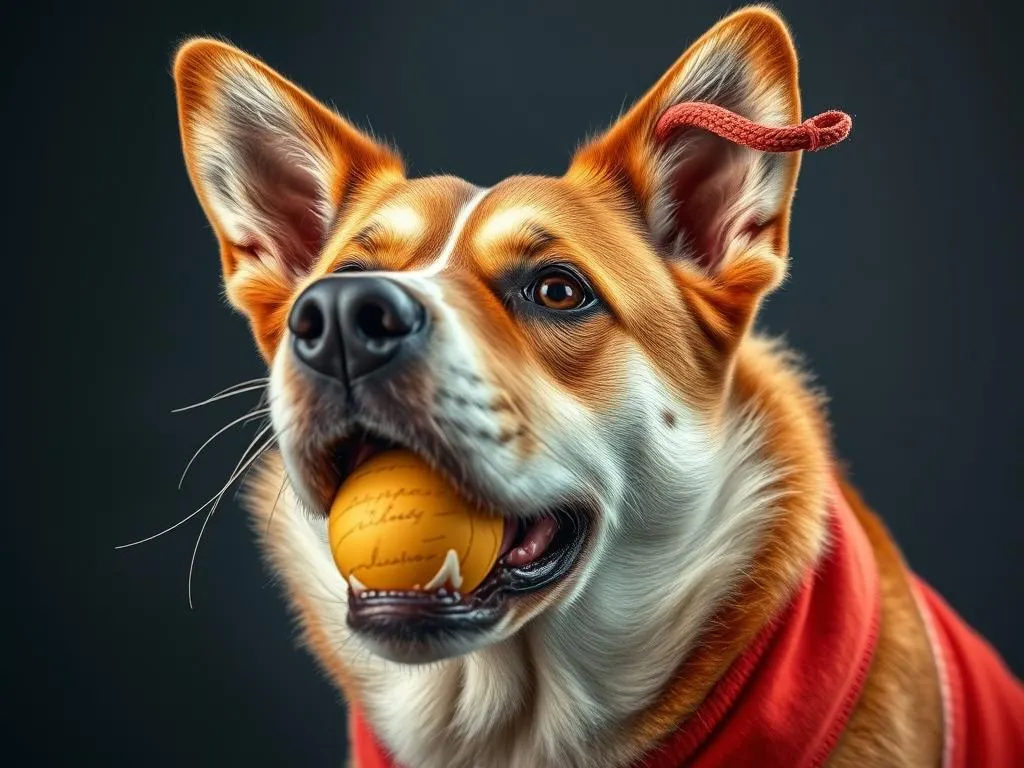
Introduction
As a dog owner, you may often wonder about the best ways to keep your furry friend healthy and happy. Physical activity is crucial for dogs, not just to maintain a healthy weight but also to provide mental stimulation and strengthen the bond between you and your pet. Enter top dog sports—a range of engaging activities designed to boost your dog’s physical and mental well-being. This article aims to inform dog owners about various sports and activities that can enhance their dog’s lifestyle, ensuring both you and your pooch have a fulfilling experience.
Understanding Dog Sports
What Are Dog Sports?
Dog sports refer to organized activities that involve dogs and their handlers in competitive or recreational settings. These sports can vary widely, from agility and flyball to obedience trials and dock diving. Each sport is designed to showcase a dog’s natural abilities while promoting teamwork and communication with their owner. Engaging in dog sports can greatly contribute to a dog’s overall well-being, providing both physical exercise and mental challenges.
Benefits of Engaging in Dog Sports
Participating in top dog sports offers a myriad of benefits:
- Physical Health: Regular participation helps manage your dog’s weight, improves cardiovascular health, and enhances muscular strength.
- Mental Stimulation: Dog sports challenge your pet’s cognitive abilities, keeping their minds sharp and engaged.
- Bonding Opportunities: Training and competing together can significantly strengthen the bond between you and your dog, leading to improved communication and understanding.
Popular Top Dog Sports
Agility
Agility is one of the most popular top dog sports where dogs navigate through a timed obstacle course consisting of jumps, tunnels, and weave poles.
- Overview: The goal is for the dog to complete the course as quickly and accurately as possible.
- Equipment Needed: Basic agility equipment includes jumps, tunnels, and weave poles, which can often be purchased or built at home.
- Tips for Getting Started: Begin with simple obstacles and gradually increase complexity as your dog becomes more comfortable.
Flyball
Flyball is a relay race involving teams of four dogs.
- Description: Each dog must jump over a series of hurdles, retrieve a ball from a spring-loaded box, and return to their handler.
- Team Dynamics: This sport emphasizes teamwork, as each dog must work in tandem with their teammates for a successful race.
- Training Tips: Start with basic commands and gradually introduce the hurdles and retrieve box.
Dock Diving
Dock diving is a thrilling sport for water-loving dogs.
- Explanation: Dogs leap off a dock into a pool, aiming to achieve the longest jump.
- Training Methods: Use positive reinforcement to encourage jumping from the dock, and gradually increase the distance.
- Safety Considerations: Always supervise your dog around water and ensure they have a life vest if they are not strong swimmers.
Canine Freestyle
Canine freestyle combines obedience, tricks, and dance in an artistic performance.
- Introduction: This sport allows dogs to showcase their creativity while performing choreographed routines.
- Training Suggestions: Start with basic obedience and add tricks as your dog becomes more comfortable.
- Competitions: Look for local competitions to participate in and gain experience.
Obedience Trials
Obedience trials test a dog’s ability to follow commands and perform specific tasks.
- Overview: These trials often include heeling, sit, stay, and recall.
- Importance of Basic Training: A solid foundation in obedience is crucial for success in these trials.
- Tips for Preparing: Consistent practice and positive reinforcement are key to mastering obedience commands.
Herding Trials
Herding trials showcase a dog’s natural herding instincts.
- Description: Dogs are tested on their ability to herd livestock under the guidance of their handlers.
- Breeds That Excel: Breeds like Border Collies and German Shepherds often excel in herding sports due to their innate skills.
- Resources for Training: Seek training from experienced handlers to develop your dog’s herding abilities.
Choosing the Right Sport for Your Dog
Assessing Your Dog’s Abilities
Before diving into top dog sports, it’s essential to assess your dog’s abilities.
- Factors to Consider: Think about your dog’s breed, age, health, and temperament. High-energy breeds often excel in competitive environments, while older or less active dogs may prefer gentler activities.
- Evaluating Interest: Observe your dog’s reactions to different activities. A dog that enjoys fetching, for example, may thrive in flyball.
Matching Sports to Your Dog’s Personality
Every dog has a unique personality, and finding the perfect sport can enhance their enjoyment.
- Overview: Active and energetic dogs may excel in agility or flyball, while more laid-back dogs might prefer obedience trials or canine freestyle.
- Ensuring Enjoyment: The most important factor is that your dog enjoys the sport. Pay attention to their body language and enthusiasm.
Starting Slow and Progressing
Introducing your dog to a new sport should be a gradual process.
- Importance of Gradual Introduction: Begin with short sessions to gauge your dog’s interest and comfort level.
- Monitoring Progress: Keep an eye on your dog’s enjoyment and stress levels, adjusting training intensity as needed.
Training for Dog Sports
Basic Training Techniques
Effective training is vital for success in top dog sports.
- Overview of Positive Reinforcement: Use treats, praise, and play as rewards to motivate your dog during training sessions.
- Consistency and Patience: Remain patient and consistent in your training approach, as dogs may take time to learn new skills.
Specialized Training Resources
Utilizing specialized resources can enhance your training experience.
- Recommended Classes: Look for local training classes specific to the sport you’re interested in.
- Importance of Professional Guidance: Professional trainers can provide valuable insights and help you navigate challenges in specific sports.
Creating a Training Schedule
Establishing a balanced training routine is essential for both you and your dog.
- Tips for Establishing a Routine: Dedicate specific days and times for training, ensuring both you and your dog are mentally and physically prepared.
- Avoiding Burnout: Mix up activities to keep training enjoyable, and allow for rest days to prevent fatigue.
Health and Safety Considerations
Physical Health Requirements
Before starting any top dog sports, ensure your dog is in good health.
- Importance of Vet Check-Ups: Schedule a vet visit to assess your dog’s fitness level and discuss any concerns.
- Nutrition and Hydration: Maintain a balanced diet and ensure your dog stays hydrated, especially during intense training sessions.
Injury Prevention
Injuries can be a concern in dog sports, but many can be prevented.
- Common Injuries: Be aware of injuries such as sprains or strains, which can occur during high-impact activities.
- Warm-Up and Cool-Down Routines: Implement routines to prepare your dog’s muscles before activities and to aid recovery afterward.
Recognizing Signs of Overexertion
It’s crucial to recognize when your dog may be overworking.
- Indicators of Overexertion: Watch for signs like excessive panting, limping, or reluctance to continue.
- Steps to Take: If your dog shows discomfort, stop the activity and consult a veterinarian if necessary.
Community and Events
Finding Local Dog Sports Clubs and Organizations
Joining a community can enhance your experience in top dog sports.
- Resources for Locating Clubs: Search online for local clubs or organizations dedicated to specific dog sports.
- Benefits of Joining: Being part of a community provides support, resources, and opportunities for socialization.
Participating in Competitions
Competing can be a thrilling aspect of dog sports.
- Overview of Competitions: Local, regional, and national competitions offer various levels of participation.
- How to Register: Research specific competitions and their registration processes to ensure you’re prepared.
Building a Social Network
Connecting with other dog owners can enrich your dog sports journey.
- Importance of Networking: Share experiences, tips, and support with fellow enthusiasts to enhance your training and competition experiences.
Conclusion
Engaging in top dog sports offers numerous benefits for both dogs and their owners. From improved physical health to enhanced mental stimulation and a stronger bond, the rewards of participating in these activities are manifold. Exploring different sports can lead to finding the perfect fit for your dog, ensuring that both you and your furry companion enjoy a fulfilling lifestyle together. Embrace the joy of participating in dog sports and discover a world of excitement and connection with your pet.









